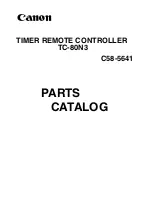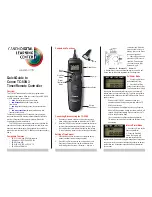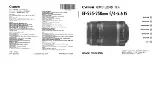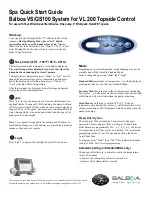
Page 11 of 20
Rev 09
The embryo begins developing before incubation and, therefore, it needs proper care, otherwise there will be a
decrease in the hatching percentage.
Below are some rules that will be helpful in obtaining suitable eggs for incubation:
1.
Collect the eggs at least 5 times a day to prevent environmental contamination. Never incubate eggs that
have been at a temperature lower than 5°C or higher than 24°C. Over this figure the germinating cell starts
developing in an abnormal way, it still develops when incubated but the chick will die during hatching!
NEVER store the eggs in the refrigerator.
2.
Do not incubate eggs dirty with faecal material, as during incubation the temperature and humidity would
lead to the establishment of a bacterial flora that would contaminate all the eggs, causing infections to the
embryos and resulting in chick death during hatching. The eggs must not have blood stains.
Do not wash the eggs for any reason, at the most you may dry brush them with an abrasive sponge.
3.
Store the eggs in a cool room with a temperature between 14°C and 16°C and humidity approximately 65-
75%.
4.
Store the eggs in the egg trays with the tip downwards.
5. The eggs are suited to incubation from the second to the sixth/seventh day after laying. Incubating eggs older
than 8 days significantly reduces the hatching percentage, up to almost zero in the event of eggs stored longer
than 15 days!
6. Choose eggs of normal shape (they must not be elongated, spherical, undulated or with any other
malformation).
7. The egg shell must not be cracked, broken, creased, soft, thin or with bluish spots (old eggs).
8. Allow cold eggs (from storage temperature) to slowly reach room temperature before placing them in the
incubator. Suddenly going from 12°C to 38°C would cause condensate on the shell which would lead to a
reduction in hatchings.
9. During incubation DO NOT add eggs at a later time!
BOROTTO RECOMMENDS:
If eggs are bought from amateurs, make sure the breeding farms are registered and
comply with animal health regulations in force, which means they have the breeding code issued by their relative
local health authorities and are accredited to it for serological tests made with regular frequency. This is the only
way to have eggs from breeders that undergo a specific vaccination program defined by a competent veterinarian
and in accordance with the local checklist on farming and the size of shelters. Availability of first-class genetic
material, which is obtained after strict selection and breed adaptation, enables better size and productivity of
animals as well as reduces the risk of incubating eggs with high bacterial contamination or diseases and thus
resulting in poor hatching results (due to premature death of the embryo in the egg before birth).
9 - Preparation and commissioning of the incubator
During transportation, pay attention not to cause collisions and/or damage to the incubator. Always position flat,
avoiding crushing and/or breakage.
For successful hatching, it is recommended to keep the incubator in residential premises, not in sheds, porches or
garages. The room temperature should ideally be between 20°C and 25°C and have no air drafts. The suitable room
must be well aerated and comfortable. Ensure the incubator is not exposed to direct sun rays or placed close to
direct heat sources such as radiators, stoves, fireplaces, boilers etc. Relative humidity must be between 50% and
75%.
ATTENTION: DO NOT USE THE INCUBATOR IN ROOMS WITH TEMPERATURES BELOW 20°C OR HIGHER THAN 25°C!
Do not use or store the incubator in rooms where are chemicals, poisons, toxic or flammable substances, even at
low concentrations, as they adversely affect embryo development. Do not use the incubator where there is a danger
of water or other substances being sprayed.
















































